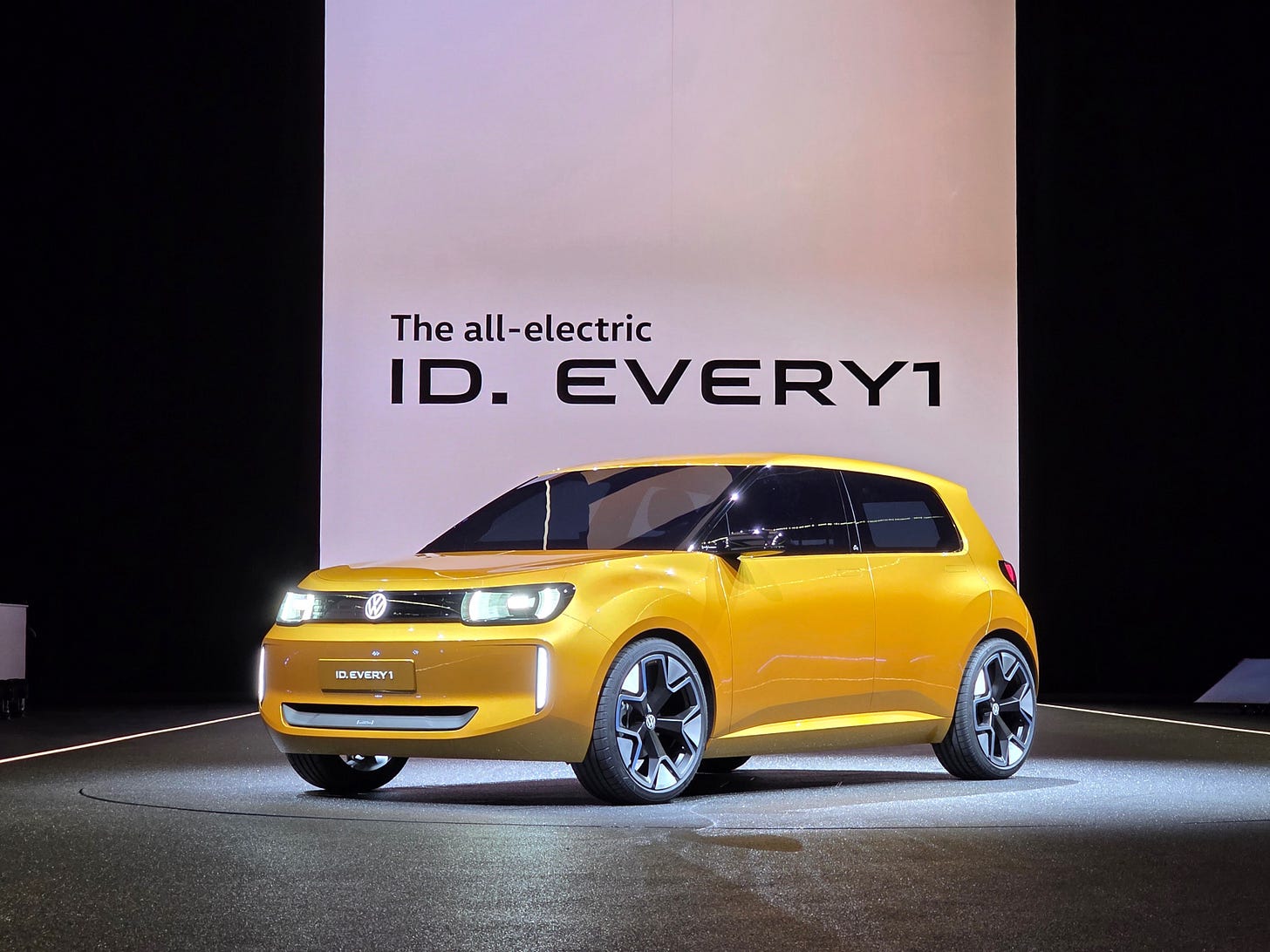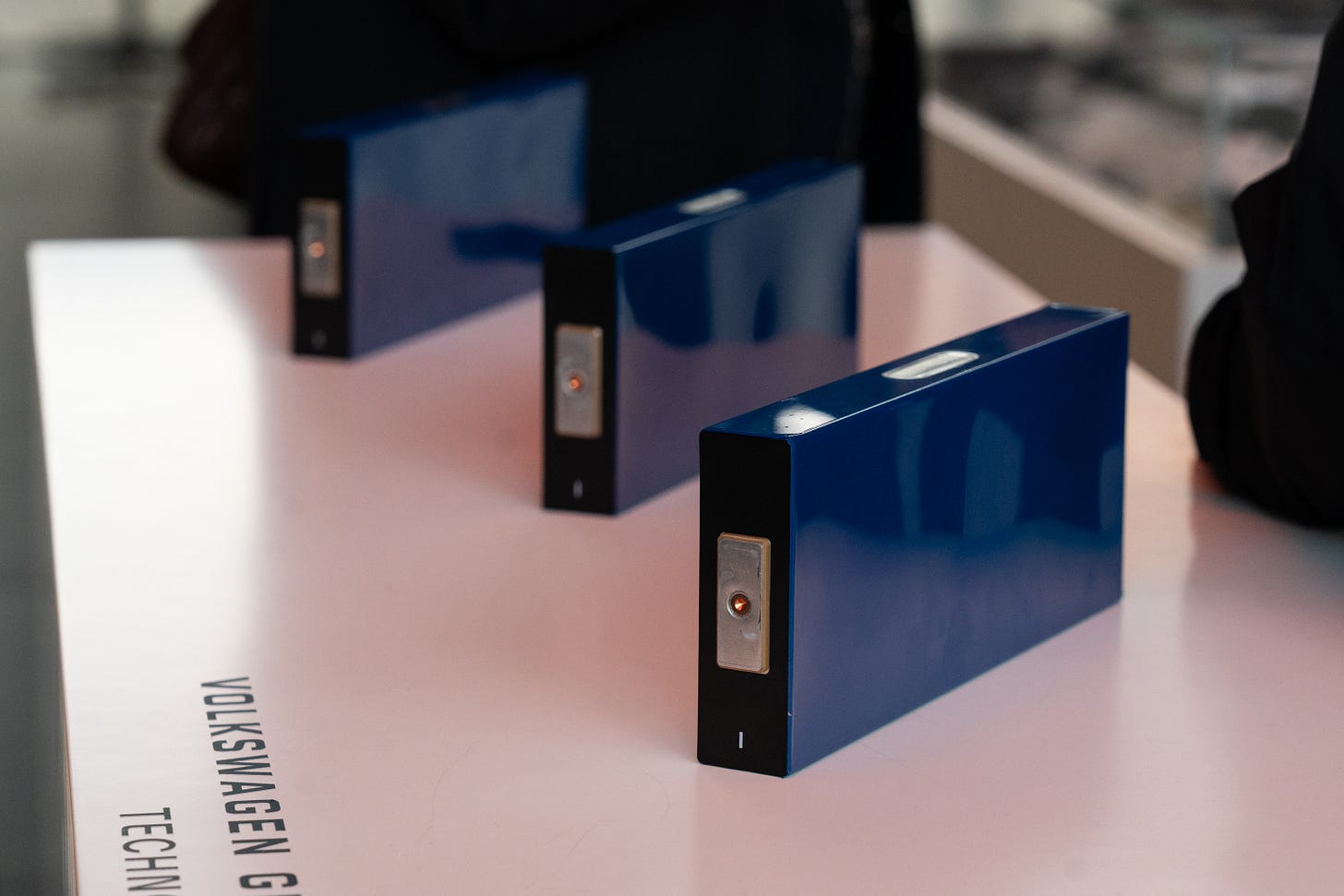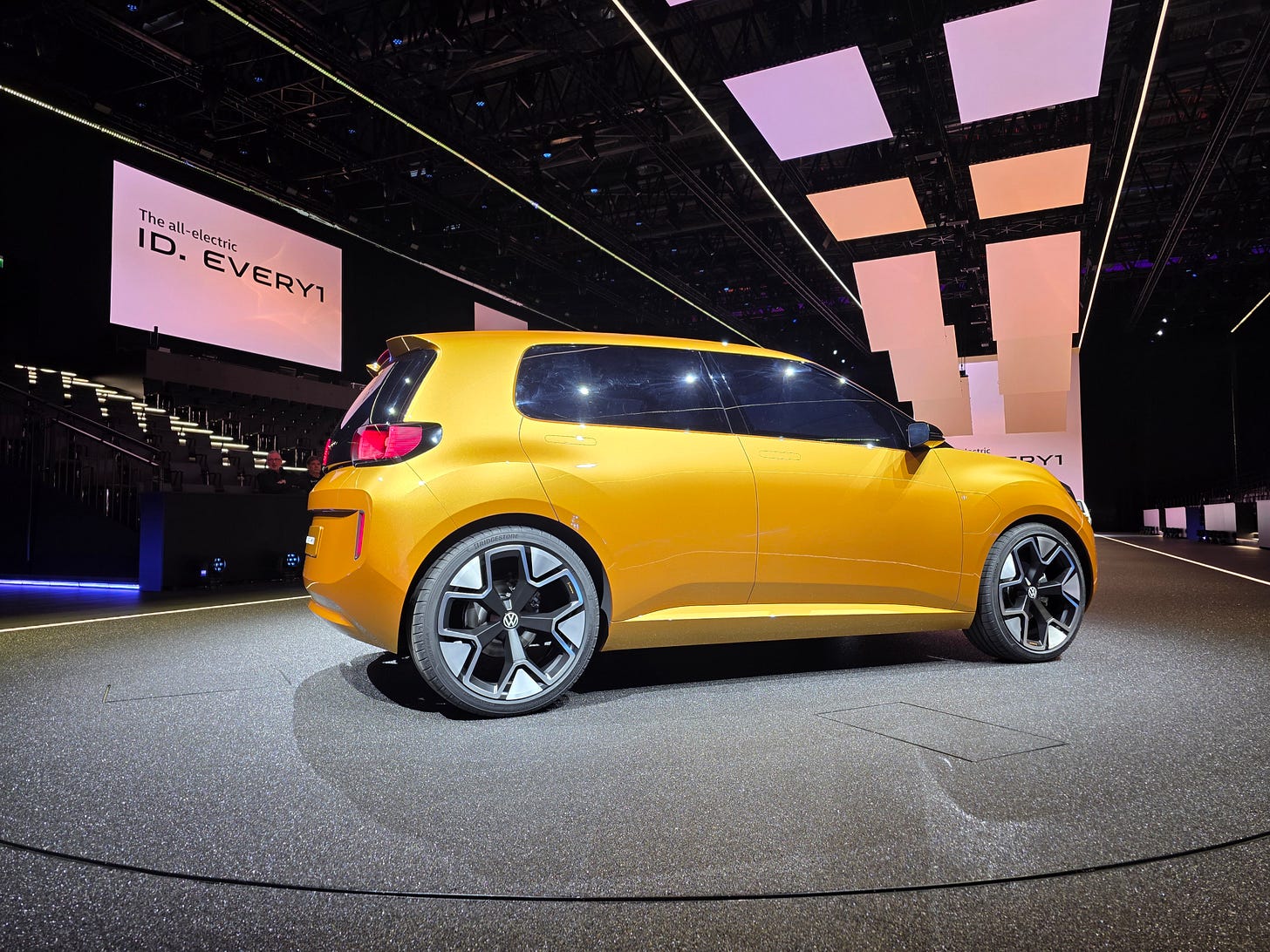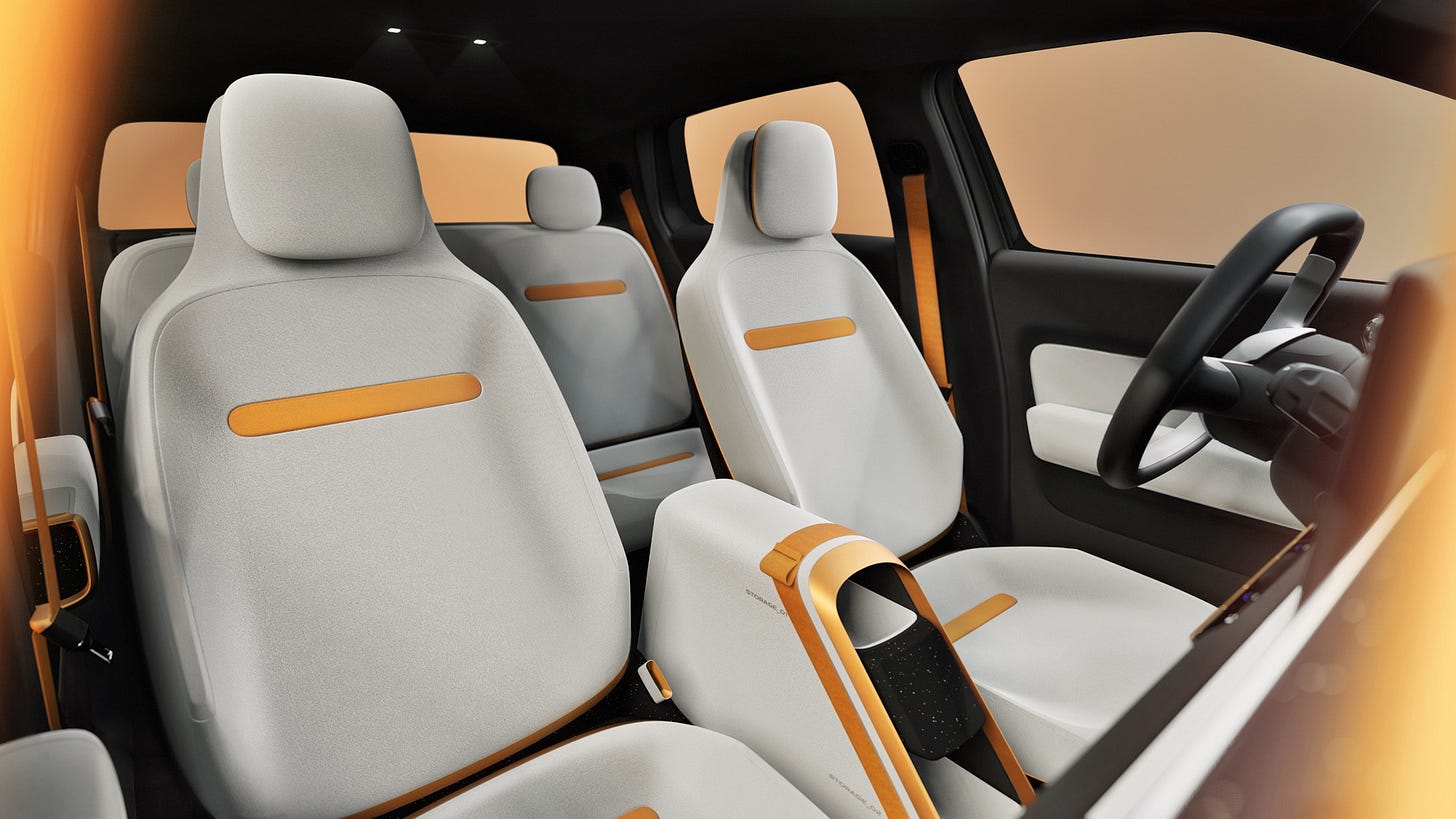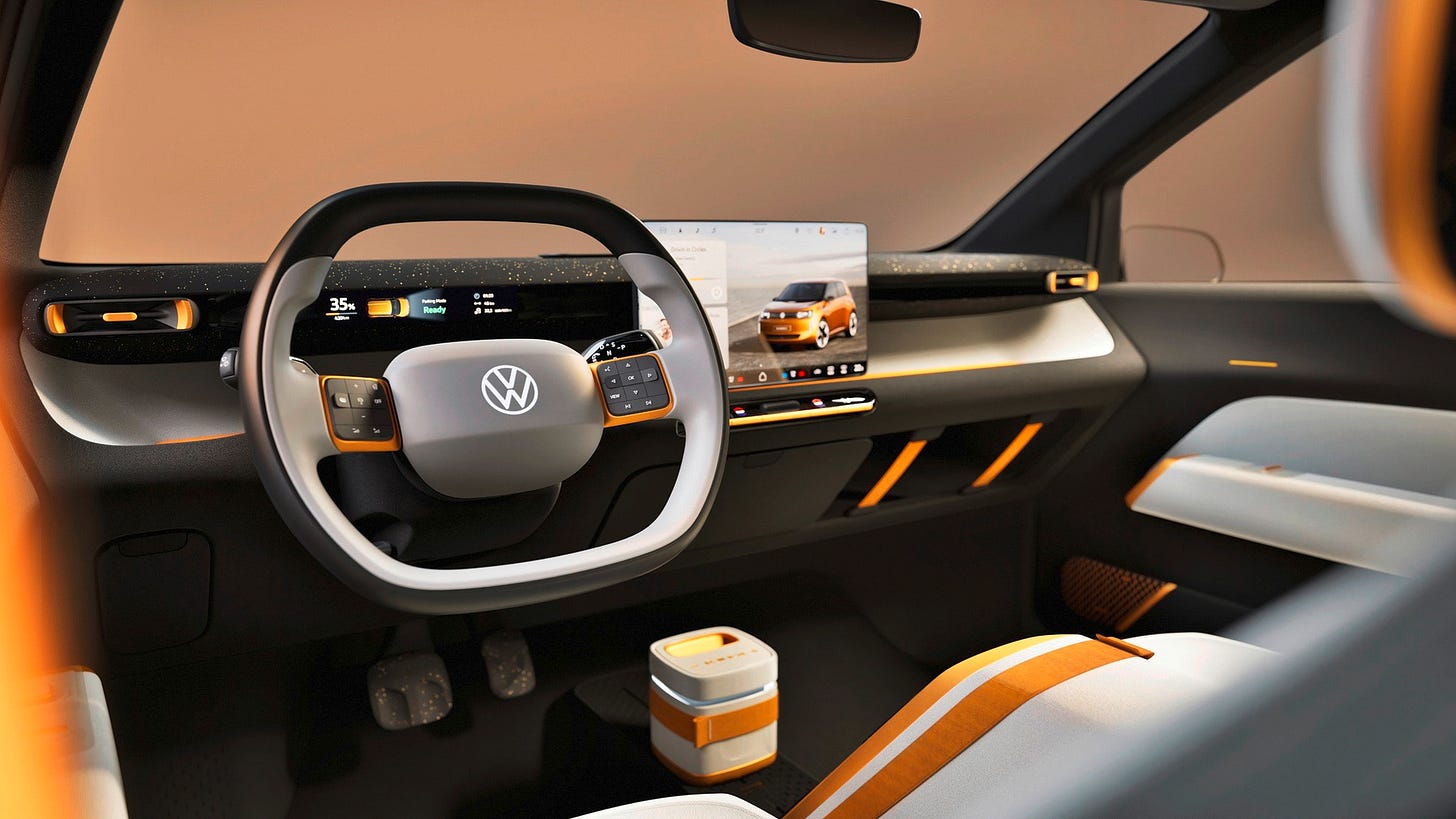How VW will make its $22,000 EV affordable without looking cheap
Plus a new exclusive on better batteries through OTA updates
Hello subscribers. Writing this 36,000 feet somewhere above Newfoundland, winging my way home from an eventful (and, frankly, exhausting) visit to the home of Volkswagen: Wolfsburg. It's necessarily going to be a fairly VW-focused update this week, but the company's got a lot going on at the moment, and it was great to dig a little deeper.
Okay, a lot deeper.
While I was out there, I got an up-close and personal look at VW's new unified battery pack design, which, if all goes according to plan, will fill the belly of most of the brand's future EVs. It's based around a revised cell design, a rectangular pouch looking a little like a tall VHS cassette, for those of you old enough to know what that is.
Individual battery cells are combined together to make battery packs. In the past, Volkswagen EVs have relied on bundling multiple cells into modules and then multiple modules into packs. For this new "unified cell" architecture, VW is following the current industry trend of ditching the modules and slapping all the cells together directly. Doing so results in less internal structure, increasing the all-important energy density to give you more miles for a given-sized battery. But, cells will still be monitored individually for stats like temperature and state of charge.
Those cells will be made in a variety of chemistries depending on application. The ID. Every1 will rely on the lower-cost LFP chemistry, which has reduced reliance on expensive (and difficult to ethically source) materials like cobalt. That's just one way that the company says will enable it to get the cost of that thing down to under €20,000 in Europe, or about $22,000 based purely on current exchange rates.
For comparison's sake, the Volkswagen ID.4 costs just over €40,000 there. Yes, that means this EV will be remarkably cheap, and while it’s just a concept for now, VW has said it plans to build it.
But it’ll take much more than chemistry to get the cost down that low. I got a walkthrough with Andreas Mindt, Head of Volkswagen Design, and Kai Grünitz, Volkswagen Brand Board Member for Technical Development, who iterated the endless steps the brand has taken to whittle away everything. That's most obvious in the car's visual design, which is simple to the extreme. There's little visual detailing, not much in the way of inset badging or complex shapes, all intended to keep production costs low.
Despite that, it's a damned fine-looking car in person, especially in that metallic yellow.
Underneath that skin, the car will use a front-drive, single-motor design, again to keep costs down. They even designed the charge port to be situated in the front fender to minimize the amount of cabling that would otherwise be required to mount it at the rear.
That powertrain will be controlled by the same zonal system architecture that Volkswagen is taking from Rivian, and even the number of processors in the car will be kept to a minimum.
That will keep development costs down, while the car's petite size and light weight are said to dramatically reduce the necessary size of the battery. It'll be just 38 kWh, delivering a range on the order of 250 km, or about 150 miles.
The car will feature DC fast-charging in addition to slower AC charging, but I was told to not expect any record-breaking charging speeds for the former. It's a tiny pack, remember, so there's not much need.
The most radical part of it all is on the inside, an interior that was sadly not present in the concept car I got to peruse, but you can see it in the rendered image above. It's simple to an extreme, VW removing everything that's not absolutely needed. They even considered ditching the touchscreen, creating a BYOD infotainment experience on your smartphone, but decided it would actually be cheaper to just put in the display.
Interestingly, though, the company plans to offer different interior packages to layer back on some modest luxuries. There might even be a special edition for pet owners with some dog-friendly interior touches, something I can definitely appreciate at the moment.
Overall, the car gives me Volvo EX30 vibes, not so much because the two cars look alike, but because there was a similar concept of simplicity and minimalism done in a way that prioritizes good design not mere cost-cutting.
The most significant cost savings factor, though, is something wholly proprietary to Volkswagen: volume. VW Group is the second-biggest manufacturer in the world, just a tick behind Toyota, meaning it has the means to stamp these things out like nobody's business -- assuming there's necessary demand in its various global markets.
One market where demand is expected to be minimal is, sadly, the United States. VW has said the ID. Every1 won't be coming here. I'm more than a little bummed about that, and I'm guessing a fair few of you will be, too. But little EVs with limited range haven’t exactly fared well here in the past, and it’s hard to imagine this one breaking that trend, despite its looks.
The currently… dynamic state of American tariffs and incentives certainly don’t help make a case, either.
Better batteries via OTA
It wasn't all VW stuff this week! For The Verge this week I had an exclusive report on Breathe Batteries. Breathe is developing battery algorithms designed to maximize the performance of existing cell chemistries, software tweaks that can boost charging speed and longevity via OTA updates.
No, I'm not talking about Tesla-style capacity upgrades, where you're forced to lug around a bigger battery than you wanted just to satisfy someone's obsession for streamlining production. This is simply a smarter way to charge, and it's coming to a Volvo near you soon -- plus more manufacturers if it catches on.
That's all for now. I'm crossing over to Nova Scotia and getting ever closer to home. But first, I'll need to escape from IAD and make my connection. Wish me luck, as I'm certainly wishing you all the best in the week ahead. [Update: I made it.]




